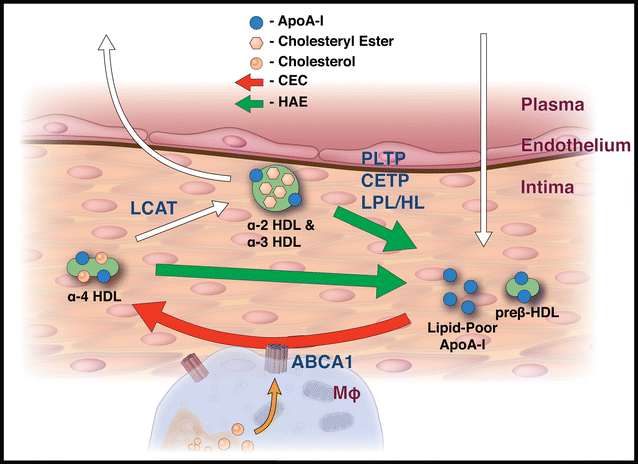Reduced HDL function in children and young adults with type 1 diabetes
- PMID: 28683835
- PMCID: PMC5501001
- DOI: 10.1186/s12933-017-0570-2
Reduced HDL function in children and young adults with type 1 diabetes
Abstract
Background: Patients with type 1 diabetes (T1D) are at increased risk of cardiovascular disease (CVD). Measures of high-density lipoprotein (HDL) function provide a better risk estimate for future CVD events than serum levels of HDL cholesterol. The objective of this study was to evaluate HDL function in T1D patients shortly after disease onset compared with healthy control subjects.
Methods: Participants in the atherosclerosis and childhood diabetes study were examined at baseline and after 5 years. At baseline, the cohort included 293 T1D patients with a mean age of 13.7 years and mean HbA1c of 8.4%, along with 111 healthy control subjects. Their HDL function, quantified by HDL-apoA-I exchange (HAE), was assessed at both time points. HAE is a measure of HDL's dynamic property, specifically its ability to release lipid-poor apolipoprotein A-I (apoA-I), an essential step in reverse cholesterol transport.
Results: The HAE-apoA-I ratio, reflecting the HDL function per concentration unit apoA-I, was significantly lower in the diabetes group both at baseline, 0.33 (SD = 0.06) versus 0.36 (SD = 0.06) %HAE/mg/dL, p < 0.001 and at follow-up, 0.34 (SD = 0.06) versus 0.36 (SD = 0.06) %HAE/mg/dL, p = 0.003. HAE-apoA-I ratio was significantly and inversely correlated with HbA1c in the diabetes group. Over the 5 years of the study, the mean HAE-apoA-I ratio remained consistent in both groups. Individual changes were less than 15% for half of the study participants.
Conclusions: This study shows reduced HDL function, quantified as HAE-apoA-I ratio, in children and young adults with T1D compared with healthy control subjects. The differences in HDL function appeared shortly after disease onset and persisted over time.
Keywords: Atherosclerosis; HDL function; HDL-apoA-I exchange; High-density lipoprotein; Type 1 diabetes.
Figures



References
-
- Soedamah-Muthu SS, Fuller JH, Mulnier HE, Raleigh VS, Lawrenson RA, Colhoun HM. High risk of cardiovascular disease in patients with type 1 diabetes in the UK: a cohort study using the general practice research database. Diabetes Care. 2006;29:798–804. doi: 10.2337/diacare.29.04.06.dc05-1433. - DOI - PubMed
Publication types
MeSH terms
Substances
LinkOut - more resources
Full Text Sources
Other Literature Sources
Medical

